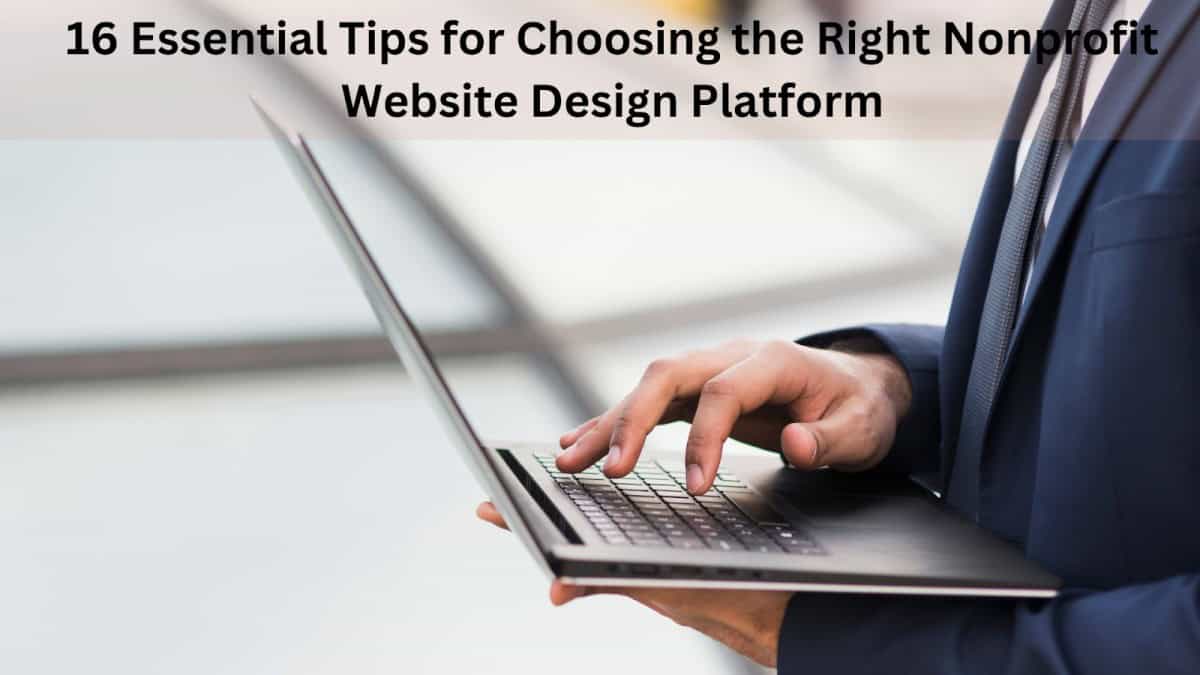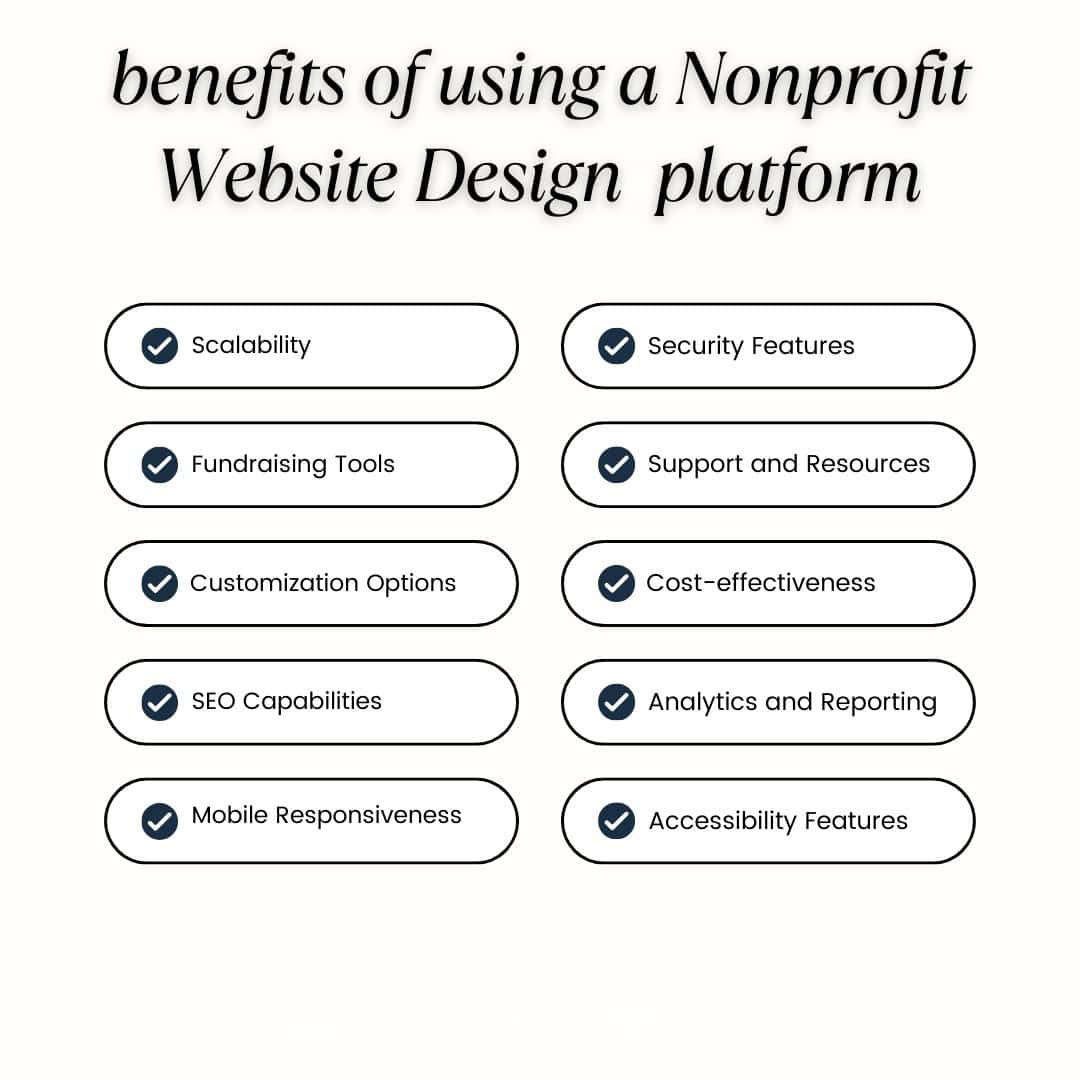
Selecting the right website design platform is crucial for nonprofits looking to establish a strong online presence and effectively engage their supporters. A well-designed website serves as the digital face of your organization, helping you communicate your mission, attract donors, and showcase your impact. With numerous options available, choosing the ideal platform can be overwhelming. This article presents 16 essential tips to guide nonprofits through selecting a website design platform that aligns with their unique needs and goals.
1. Evaluate Customization Options
Your nonprofit’s website is often the first point of contact for potential donors and volunteers, making it crucial to create a strong first impression. Consider cost-effectiveness and value for money alongside analytics tools for tracking performance in nonprofit website design. Accessibility features ensure inclusivity, and community engagement tools foster interaction in nonprofit website design. Regular updates and feedback from users contribute to continuous improvement. By carefully evaluating these factors, nonprofits can select a platform that enhances visibility, fosters supporter connections, and drives mission success effectively within nonprofit website design.
2. Assess Pricing and Affordability
While a great website is an investment, finding a solution that fits your budget is important. Additionally, look for platforms that offer scalable pricing as your organization grows. This ensures that your website can expand and adapt along with your nonprofit, providing a cost-effective solution that meets your current and future needs.
3. Consider Customer Support and Resources
Having reliable support can make a huge difference in managing your website effectively. When assessing customer support, look for 24/7 customer service, comprehensive knowledge bases, video tutorials and guides, and active user forums. A pro tip is to test the responsiveness of customer support before committing to a platform, ensuring they can meet your needs promptly and efficiently.
4. Check SEO and Analytics Capabilities
A great website is only valuable if people can find it. That’s where SEO and analytics come in. Important features to seek include built-in SEO tools, customizable meta tags and descriptions, integration with Google Analytics, and regular SEO health reports. Effective SEO practices can greatly enhance your nonprofit’s online visibility, enabling you to reach a wider audience and fulfill your mission more effectively.
5. Prioritize Security and Reliability
Protecting your nonprofit’s and donors’ information is a top priority. When evaluating security features, ensure the platform offers SSL encryption, regular backups, secure payment processing, and compliance with data protection regulations. Expert advice: Do not compromise on security to save money. The cost of a data breach far outweighs the expense of implementing strong security measures.

6. Accessibility Features
Making your website accessible to all users is not just good practice—it’s essential for reaching a broader audience. Look for platforms that offer alternative text for images, keyboard functionality, customizable text sizes, and high-contrast color options. Accessible websites often rank higher in search results, boosting your SEO efforts. Ensuring accessibility helps you connect with a broader audience and enhances your site’s performance in search engine rankings.
7. Ease of Use
Your website platform should be intuitive for team members with varying technical skills. Key ease-of-use features include a user-friendly interface, drag-and-drop editors, pre-designed content blocks, and easy content update tools. Remember, the easier your platform is to use, the more likely your team will keep your website up-to-date. Implement proper logo sizing techniques to prominently feature your brand’s identity without compromising its visual integrity or proportions.
8. Mobile Optimization
Fast loading times on mobile devices are critical for user retention, so choose a platform known for its speed and efficiency on smartphones and tablets. Before finalizing your choice, thoroughly test potential platforms on various devices to guarantee a consistent and smooth user experience across all screens. This approach will help you create a website that looks great and performs optimally on every device.
9. Integration with Donation Systems
For many nonprofits, online donations are vital, making it essential that your website facilitates easy contributions. When choosing a platform, prioritize those that seamlessly integrate with popular donation tools, ensuring a smooth donor experience. Look for customizable donation forms that can be tailored to reflect your organization’s branding and specific campaign needs. Recurring donation options encourage sustained support, while multiple payment gateways accommodate donor preferences and improve accessibility.
10. Content Management Capabilities
Your nonprofit’s website should serve as a dynamic platform for effectively sharing your organization’s story and updates. Ensure it includes essential content management features, such as easy blog post creation, to keep supporters informed and engaged with timely updates. Event calendar functionality showcases upcoming activities and initiatives, while volunteer sign-up forms streamline recruitment and encourage community involvement. Including media libraries for photos and videos enhances storytelling capabilities, visually showcasing impact and events.
11. Brand Customization
Your nonprofit’s website should reflect and extend your brand identity seamlessly. When selecting a platform, prioritize those that enable custom font uploads to maintain consistent typography that aligns with your brand guidelines. Look for flexible color schemes that allow you to integrate your organization’s palette across all site elements. Implement proper logo sizing techniques to prominently feature your brand’s identity without compromising its visual integrity or proportions.
12. Multilingual Support
For nonprofits operating in multiple regions, ensuring multilingual support on your website is essential for reaching diverse audiences effectively. Look for platforms that offer easy language switching, allowing users to navigate seamlessly between different language options. Support for right-to-left languages, such as Arabic or Hebrew, is crucial for accommodating specific linguistic needs. Platforms with automatic translation options facilitate quick content translations, enhancing accessibility for non-native speakers.
13. Integration with Social Media
Social media is crucial in helping nonprofits amplify their message and engage supporters effectively. When choosing a platform, prioritize those that offer easy integration of social media sharing buttons, enabling visitors to share your content across various platforms effortlessly. Social media feed integration lets you showcase real-time updates and interactions directly on your website, keeping visitors informed and engaged with current activities.
14. Scalability
Selecting a platform that scales with your growth as your nonprofit expands is crucial. Look for options offering tiered pricing plans and easy upgrades to more advanced features, accommodating evolving needs without disrupting operations. Ensure the platform can handle increased traffic and offer flexibility to add new functionalities as your organization diversifies its activities. Planning for future growth with a scalable platform minimizes the need for disruptive migrations, allowing you to focus on advancing your mission efficiently.
15. Performance and Uptime
A slow or unreliable website can significantly impact your nonprofit’s credibility and visitor experience. When assessing performance, prioritize platforms that ensure fast loading times, preventing user frustration. Utilize content delivery networks (CDNs) for global reach, optimizing delivery speeds regardless of user location. Regular performance optimization, including caching and code minification, is essential to sustain fast load times.
16. Evaluate Built-in Tools
Built-in tools can significantly streamline operations and enhance efficiency for nonprofits. Look for platforms that offer essential features like seamless email marketing integration to manage communications effectively. Event management systems help organize and promote events efficiently, while volunteer management tools simplify recruitment and engagement processes. Membership databases centralize member information, facilitating membership management tasks.
Conclusion
Choosing the right website design platform for your nonprofit is a crucial decision that can greatly impact your organization’s online success. By carefully considering these 16 factors, you can select a platform that meets your current needs and supports your future growth.
Remember, the best platform for your nonprofit depends on your specific goals, budget, and technical capabilities. Take the time to research and compare different options, and take advantage of free trials when available.
FAQS
What is the best website platform for nonprofits?
The best website platform for nonprofits depends on their specific needs. Look for platforms offering ease of use, robust fundraising tools, responsive design, and scalability, like WordPress with plugins or Squarespace for simplicity.
What should I look for when choosing a web design company?
When choosing a web design company for nonprofits, prioritize experience in the nonprofit sector, a portfolio with responsive designs, knowledge of fundraising integration, and the ability to provide ongoing support and maintenance.
Is Wix good for nonprofits?
Wix can be suitable for nonprofits with its user-friendly interface, drag-and-drop functionality, and various templates. However, assess its ability to integrate essential nonprofit tools like donation systems and membership management before deciding.
Suggested articles:
- Top 10 Pros & Cons of Hiring a Website Design Company
- Choose the Best Website Design Company for Any Business Size
- Top 15 Pros of Custom Website Design
Daniel Raymond, a project manager with over 20 years of experience, is the former CEO of a successful software company called Websystems. With a strong background in managing complex projects, he applied his expertise to develop AceProject.com and Bridge24.com, innovative project management tools designed to streamline processes and improve productivity. Throughout his career, Daniel has consistently demonstrated a commitment to excellence and a passion for empowering teams to achieve their goals.